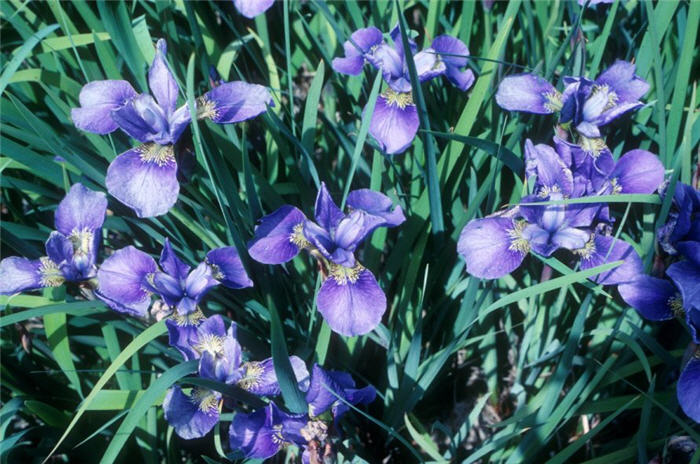| Botanical Name: Iris sibirica | |
| Common Name: Siberian Iris |

-
Anatomy
-
Culture
-
Design
Plant Type
Perennial
Height Range
1-3', 3-6'
Flower Color
Blue, Lavender, Purple, Red, Violet, White
Flower Season
Spring, Summer
Leaf Color
Green
Bark Color
n/a
Fruit Color
Brown, Orange
Fruit Season
Summer, Fall
Sun
Full, Half
Water
High
Growth Rate
Moderate
Soil Type
Clay, Loam
Soil Condition
Average, Rich, Well-drained, Moist
Soil pH
Acid, Neutral
Adverse Factors
n/a
Design Styles
English Cottage, Formal, Japanese, Water Garden, Woodland
Accenting Features
Showy Flowers, Unusual Foliage
Seasonal Interest
Winter, Spring, Summer, Fall
Location Uses
Background, Perennial Border, Shrub Border, Foundation, Patio, Walls / Fences
Special Uses
Cut Flowers, Mass Planting, Small Spaces
Attracts Wildlife
n/a
Information by: Stephanie Duer
Photographer: Linda Engstrom
Photographer: Linda Engstrom
-
Description
-
Notes
This iris blooms late spring, with a more delicate and refined form than the bearded iris. The flower has six segments, with three recurved and three standards (the petals that stand upright). Flower colors are white, blues, purple, rose, and violet. The foliage is narrow and dense, eventually having an upright vase-shape. The flowers, when they go to seed, produce beautiful orange berries that are persistent into winter, and the foliage develops an orangish tone in the fall. Grows about 2 to 4 feet tall and 18 to 24 inches wide. Truly, a three season iris.
Grow in full sun to part shade in well drained soil. Though it is not particular about soil type, it will grow best in a fertile, loamy soil. The flowers are lovely cut, but the seed heads are quite ornamental and its worth letting some go to seed. The foliage is very persistent into the winter months and provides a pleasant winter presence; cut back in late winter to early spring as new growth emerges.